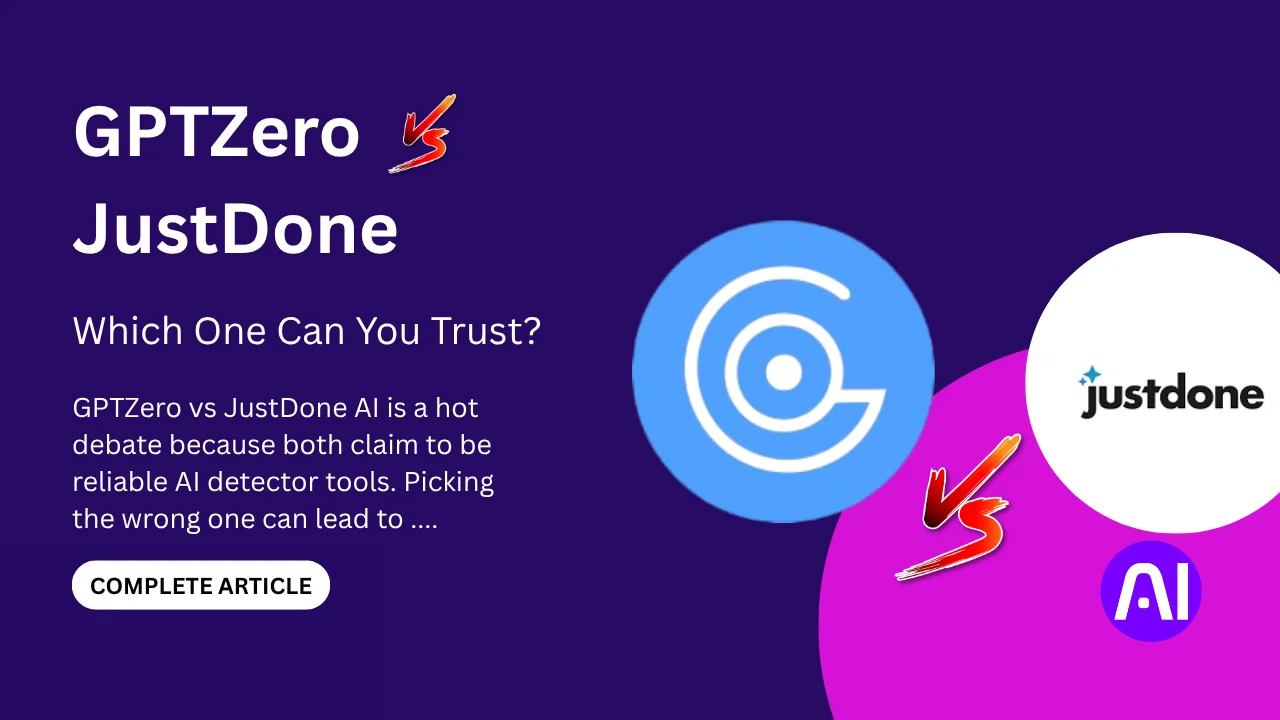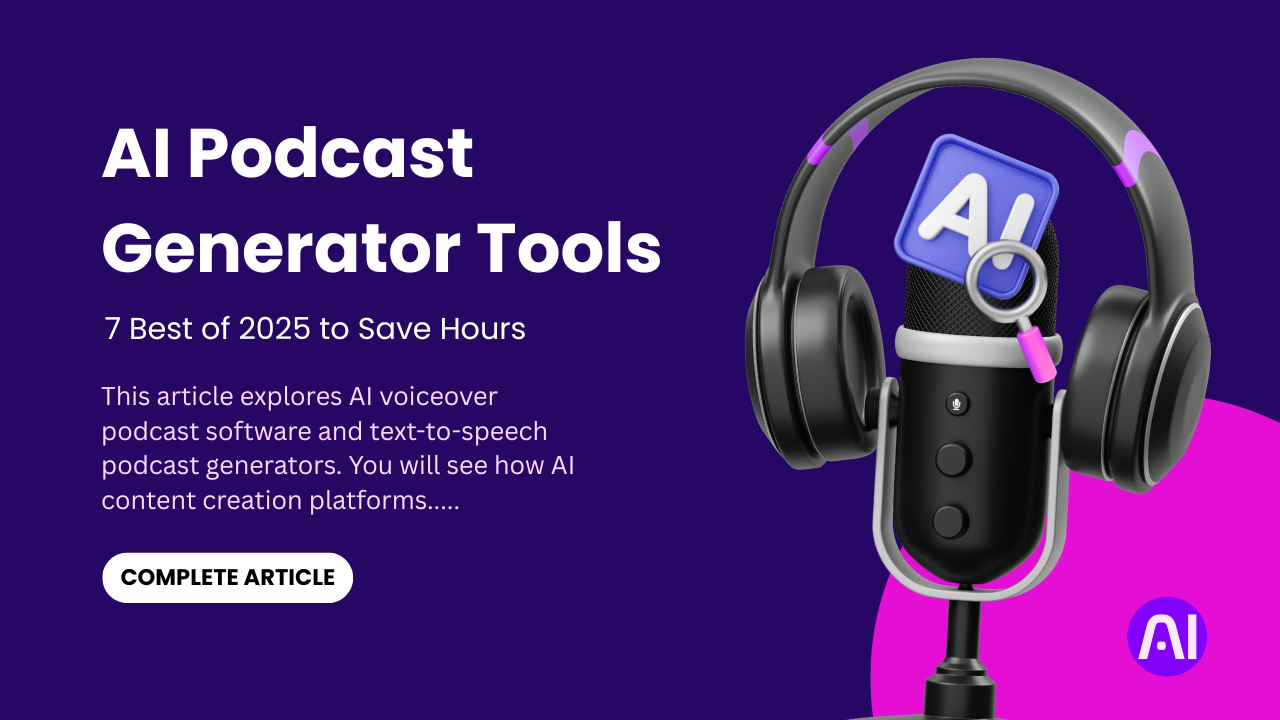Statistics can be tricky. Many people struggle with things like finding the average, reading data, or solving math problems with lots of numbers. But now, there’s an easier way to do it, with the help of a statistics AI solver.
A statistics AI solver is a smart computer tool that uses artificial intelligence to solve math problems fast. You just type in your question, and the AI gives you the answer along with simple steps to show how it solved it. It’s like having a math helper that’s always ready.
These tools are great for students doing homework, teachers checking work, or even adults who need help with data at work. They can run things like statistical significance tests, explain graphs, and solve statistics problems step by step. They’re part of a growing group of automated statistics solutions that make hard math much easier to understand.
In this article, you’ll learn how a statistics AI tool works, why it’s better than a normal statistics calculator, and how people use it in real life. We’ll also look at some real stories, expert tips, and a simple guide to get started.
Let’s jump in and see how these tools can help solve your math problems faster and smarter.
What Is a Statistics AI Solver?
A statistics AI solver is a smart tool that helps you solve math problems in statistics. It uses artificial intelligence (AI) to understand your question and give you the answer fast.

You don’t need to know the right formula or type perfect math symbols. You can just type your problem in words, and the AI knows what to do. It works like a math helper that explains every step, so you can learn while getting the answer.
This tool is more powerful than a regular statistics calculator. It can do hard things like find the average, show graphs, or run tests to see if results are important. These tests are called statistical significance tests, and they are used in science and school research.
Many people use these tools for different reasons. Students use them for statistics homework help. Teachers use them to explain tough ideas. Workers use them to look at data in jobs like business or health.
Because it works fast and explains clearly, it’s known as an automated statistics solution. It helps you solve statistics problems step by step in a way that’s easy to follow.
So if you ever feel stuck with a math problem, a statistics AI tool can help you understand and solve it without stress.
AI Statistics Calculator in Practice
An AI statistics calculator is a smart tool that helps you understand data fast. You can enter numbers from a survey or project, and it shows results like the average, standard deviation, and even runs tests like ANOVA or chi-square to check if your findings are important.
The best part? It explains everything in simple words. With AI response generator features, the tool tells you not just the answer, but what it means. For example, it might say, “This result is statistically significant at p < 0.05,” and then explain that this means your result likely didn’t happen by chance.
This makes AI for statistical analysis very useful for students. It helps you solve problems and understand your results, step by step.
Best AI Tools for Solving Statistics Problems


These AI-powered tools help you with statistics by taking your data, running tests, and explaining results clearly. Great for middle-school students, teachers, or anyone new to data!
1. JASP
Best known for: User-friendly scientific stats software
Free or Paid: Free and open-source
JASP lets you run t-tests, ANOVA, and correlation with simple clicks. It shows neat tables and colorful charts. Its layout is clear, making it easy to learn. A special feature is Bayesian statistics, that’s a smart way to find results, but JASP makes it easy to use.
It also has tutorials and example files, so you can learn while you work.
This makes JASP a top statistics AI tool because it doubles as a statistics homework help guide. Because it breaks down each result and explains labels, students can learn how to solve statistics problems step by step and feel confident about their answers.
2. PSPP
Best known for: Free SPSS-style stats tool
Free or Paid: Free
PSPP works like the paid SPSS but doesn’t cost anything. It can do chi-square, regression, factor analysis, and more. The results come in clear tables that show each step.
It also has a syntax editor, so you can repeat your work again and again, which is great for learning.
PSPP teaches good data habits by showing how tests fit together, which helps you learn automated statistics solutions in a simple way. It’s a solid statistics calculator tool that helps students understand both math and meaning.
3. KNIME Analytics Platform
Best known for: Visual analytics workflows and big data support
Free or Paid: Free and open-source
KNIME uses a drag-and-drop flowchart to build your analysis. Each box is a step, like cleaning data or running a test. You can add machine learning nodes too. Community extensions make it powerful.
It shows every action visually, which helps you learn how data moves from raw numbers to results.
For anyone wanting a clear, visual way to apply AI for statistical analysis, KNIME is perfect. It makes complicated data easy to follow, great for science class projects and learning advanced ideas.
4. RapidMiner (Free Edition)
Best known for: Visual analytics and predictive modeling
Free or Paid: Free up to 10,000 rows
RapidMiner builds workflows with blocks for loading, cleaning, and testing data. You can even do prediction and machine learning. Templates are ready to use, like for correlation or regression.
It teaches you how tests connect and lets you see every step clearly.
Perfect for projects in school, it acts as an AI statistics calculator that helps you solve statistics problems step by step. For students, it’s a visual and smart way to learn both statistics and data science.
5. Wolfram Alpha
Best known for: Instant math and statistics answers
Free or Paid: Free basic access; Pro version is paid
Wolfram Alpha lets you type questions like “mean of 5, 10, 15” or “chi-square test for this table.” It answers fast, showing steps, visuals, and formulas.
It explains each math idea simply, which makes it a good statistics problem solver AI.
For quick homework checks or understanding statistical significance tests, it’s very helpful. The Pro version adds more ability, like uploading your own data and seeing deeper explanations.
6. Google Sheets with AI Add-ons
Best known for: Spreadsheet stats with smart help
Free or Paid: Free; some add-ons may charge
Google Sheets is easy to use, and some add-ons add AI help. They guide you through cleaning data, making graphs, and testing hypotheses.
You enter your data, then let the add-on do the math. It shows results in the sheet with simple explanations.
This approach blends a familiar statistics calculator with AI help, making it easy for students to do statistics homework help right in their spreadsheet.
Comparing these Statistics AI Solver Tools
There are many AI tools that can help you with statistics, but each one works a little differently. Some are better for quick answers, while others are great for learning and doing full projects.
This table will help you compare the most popular and trusted tools, so you can pick the one that fits your needs best, whether you’re doing homework, a class project, or just trying to learn how to solve statistics problems step by step.
| Tool Name | Best For | Free or Paid | Step-by-Step Help | Easy to Use? | Types of Tests It Can Do |
| JASP | School projects and research | Free (Open-source) | Yes | Yes | T-tests, ANOVA, regression, Bayesian analysis |
| PSPP | Learning and practice like in SPSS | Free | Yes | Somewhat easy | Chi-square, regression, factor analysis |
| KNIME | Visual learning and big data analysis | Free (Open-source) | Yes | Yes (drag & drop) | Correlation, regression, prediction, data cleaning |
| RapidMiner | Beginners and machine learning projects | Free (limit: 10,000 rows) | Yes | Yes | Regression, classification, clustering |
| Wolfram Alpha | Quick answers to math and stats questions | Free (Pro has more) | Some help | Yes (simple typing) | Mean, median, mode, chi-square tests |
| Google Sheets + AI Add-ons | Spreadsheet work with smart help | Free (some add-ons paid) | Yes | Yes (spreadsheet) | Averages, graphs, basic hypothesis testing |
These tools are all trusted by students, teachers, and professionals. They give you smart, fast, and clear help with your statistics work. Whether you want full explanations or just quick answers, there’s a statistics AI tool that can make your math problems easier to understand.
Which Tool Is Best for You? Complete Guidelines
With so many great tools available, you might wonder: Which one should I use? The answer depends on what you’re trying to do and what help you need.
If you’re a student who wants to solve statistics problems step by step and understand each part clearly, then JASP is a great choice. It’s simple, free, and explains things in an easy way. It’s perfect for school projects, tests, or learning how to read graphs and charts.
If you want a tool that works like professional software but is still free, try PSPP. It’s a little harder to learn than JASP, but it’s good if your teacher uses SPSS or if you want to practice for future research work.
If you learn better by seeing each step in a picture or flowchart, then KNIME or RapidMiner will work well for you. These tools let you build your own data path and see how each part connects. They are great for visual learners and perfect for school science projects or big data tasks.
Need quick answers without doing all the work yourself? Wolfram Alpha is the best tool for that. You just type your question, and it gives you the answer with a short explanation. It’s perfect when you’re in a hurry or want to check your homework fast.
If you already use Google Sheets for school or projects, then adding an AI plugin can turn it into a smart statistics AI tool. It’s easy to use and helps with graphs, averages, and basic tests. This can be very helpful if you like working in spreadsheets.
So, think about what kind of help you need. Do you want full steps, quick answers, or a way to analyze your data with AI? Each of these tools is a real automated statistics solution, but the best one for you depends on how you like to learn.
The Future of Statistics AI Solver Tools
The future of statistics AI solver tools is very exciting. These tools are getting smarter, faster, and easier to use every year. In the future, they will help more people, students, teachers, scientists, and even doctors, understand data without needing to do hard math on their own.
Today, many companies already use AI for statistical analysis to help make better decisions. A study by McKinsey found that about 7 out of 10 companies use AI to look at data and find patterns. This means AI tools are becoming very important, not just in school, but also in the real world.
Soon, these tools will be able to do even more. They will:
- Find patterns in large amounts of data,
- Run tests in just seconds,
- And explaining results in simple, easy-to-understand words.
Some tools may even talk to you or work on your phone. They will become more like helpful assistants than just calculators.
For students, this is great news. These AI tools won’t just give you answers, they will teach you how to solve problems. You’ll be able to learn math and statistics in a fun and simple way.
As the world uses more data every day, the need for good statistics AI tools will keep growing. These tools are the future of learning and working with numbers.
Some Experiences Shared by People
Many people have shared their stories online about using AI tools to solve statistics problems. Here are two real-life examples:
Case Study 1: How Estonia Used AI Tools to Improve Math Learning
User: High school students and teachers in Estonia
Estonia is a small country in Europe. In 2013, schools there started using computers to help students with math. Before that, students only used paper and pencil.
Now, teachers use digital tools to teach with real numbers and data. These tools work like today’s statistics AI solvers. Students learned about things like average, chance (probability), and why results matter (statistical significance).
Instead of just solving problems, students also understood what the answers meant and how to explain them.
Result: Students become better at math. Estonia is now one of the top countries in math. This shows that AI for statistical analysis helps students learn faster and enjoy math more.
Case Study 2: Using Wolfram Alpha for Smarter Homework
User: Middle and high school students using Wolfram Alpha for schoolwork
Many students around the world use Wolfram Alpha, a popular AI statistics calculator, for homework. One teacher noticed her students were always getting the answers right. She found out they were using Wolfram Alpha.
Instead of getting angry, the teacher asked how it helped. The students said the tool showed every step clearly. It made hard topics like chi-square tests and standard deviation much easier to understand.
They were not just copying, they were learning how to solve statistics problems step by step.
Result: The students asked better questions in class and did better in tests. The teacher saw that automated statistics solutions can help students learn when used the right way.
Professional Suggestions: What Experts Say About Using AI for Statistics
Many teachers and experts believe that AI tools for statistics are very helpful for students. These tools don’t just give the right answers, they also explain how the answers were found. This helps students understand their work better, especially when the math is hard.
A report from the National Center for Education Statistics showed that students who use digital tools like AI statistics calculators often do better in class. These students ask more questions, join more in class discussions, and feel more confident. That’s because AI tools break big problems into small, easy steps.
Teachers also say that automated statistics solutions save time. Instead of doing long math by hand, students can focus on learning what the numbers mean. For example, they can use AI to test data, find patterns, and understand things like standard deviation or probability more clearly.
In the business world, experts also use these tools. A 2023 study by Deloitte found that over 65% of companies now use AI for statistical analysis. These companies use AI to understand trends, check data, and make better decisions faster.
In simple words, experts think that learning with statistics AI tools is smart. These tools help students learn not just what the answer is, but why it matters. That’s how AI can become a helpful learning partner, not just a calculator.
Conclusion: Why Statistics AI Solvers Are So Useful
Statistics AI solver tools are making math and data much easier to understand. These tools help students, teachers, and workers solve problems quickly. With an AI statistics calculator, you can enter your numbers and get step-by-step answers in just seconds.
More than that, these tools explain the answers in simple words. This helps you understand what the numbers mean, not just what the answer is. That’s why many people say AI for statistical analysis is a great way to learn.
In this article, we looked at real stories. In Estonia, schools used smart tools to make math learning better. Students who used automated statistics solutions like Wolfram Alpha were able to ask better questions and get better test scores.
Experts also say these tools help save time and build real skills. As more schools and jobs use data, learning to use statistics AI tools will be very important.
So, if you want to learn faster, understand data better, and feel more confident in math, using an AI tool can really help.
If you love to be advanced with the proper use of AI tools in this developing Era of AI then you should Explore our amazing Guide on Jungle AI, Jungle AI: How 1M+ Students Study Smarter (Not Harder)
FAQs
1. What are the best AI tools for solving statistics problems?
Some of the best tools are Wolfram Alpha, JASP, RapidMiner, and Google Sheets with AI add-ons. These are smart tools that act like a statistics AI solver and help you find answers quickly with simple steps.
2. How can I use AI for statistical data analysis in school projects?
You can type your data into tools like Wolfram Alpha or JASP. These tools will show you the average, patterns, or test results. They are perfect for learning AI for statistical analysis in an easy way.
3. Is there a free AI tool to solve statistics homework online?
Yes, many tools are free. StudyMonkey AI and Wolfram Alpha both have free versions that act as automated statistics solutions. They can help you with step-by-step answers for homework.
4. Can AI statistics calculators handle multiple choice questions?
Yes. Some tools use smart AI response generator features to understand your question and pick the right answer. These tools can be helpful for practice tests and quizzes.
5. How do AI tools explain statistical significance tests simply?
Tools like Wolfram Alpha explain terms like “p < 0.05” in simple words. They tell you if your result is important or if it just happened by chance. That helps you learn faster.
6. What is the best AI statistics calculator for beginners?
JASP is a good choice for students. It’s free and easy to use. It explains hard ideas like regression or t-tests with pictures and short text.
7. How accurate are AI tools for solving statistics problems?
Most tools are very accurate for common problems. For example, Wolfram Alpha and MathSolver.top can solve over 90% of basic statistics questions correctly. But it’s still smart to check your answers with a teacher when you’re not sure.
8. Can I use AI to learn statistics step by step?
Yes. Many tools show you each step clearly. They act like a tutor and help you solve statistics problems step by step. This way, you don’t just get the answer—you learn how to do it.
9. Do AI statistics tools cost money?
Some tools are free. Others have both free and paid plans. JASP and basic Wolfram Alpha are free, while RapidMiner and some advanced tools cost money if you need more features.
10. Can AI statistics calculators work with big data?
Yes. Tools like KNIME and RapidMiner are made to work with large data sets. They help you find patterns and trends, even in thousands of numbers.
11. What do teachers think about using AI for statistics?
Many teachers say it’s helpful. They see that students using statistics AI tools understand data better and ask smarter questions. AI can make learning easier when used the right way.
12. Will AI replace teachers in math and stats?
No. AI helps teachers, but it doesn’t replace them. Teachers are still needed to explain hard parts, help with questions, and guide students. AI is just a tool to support learning.








